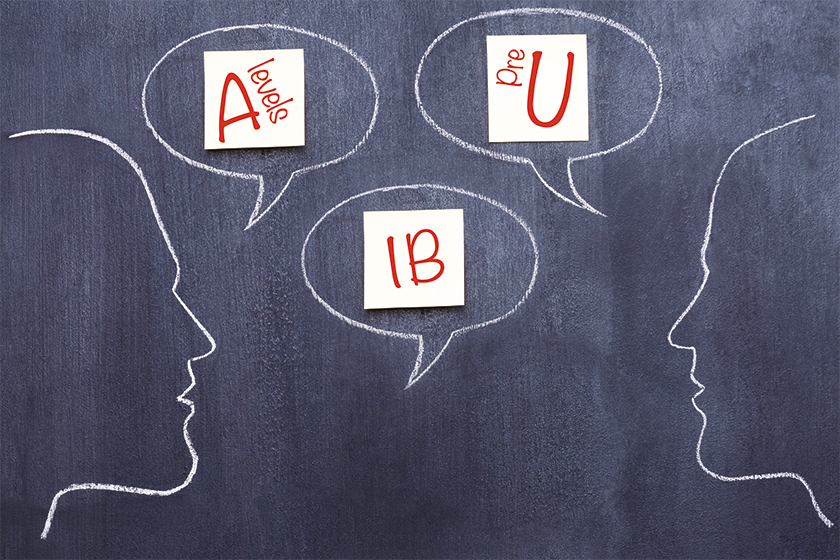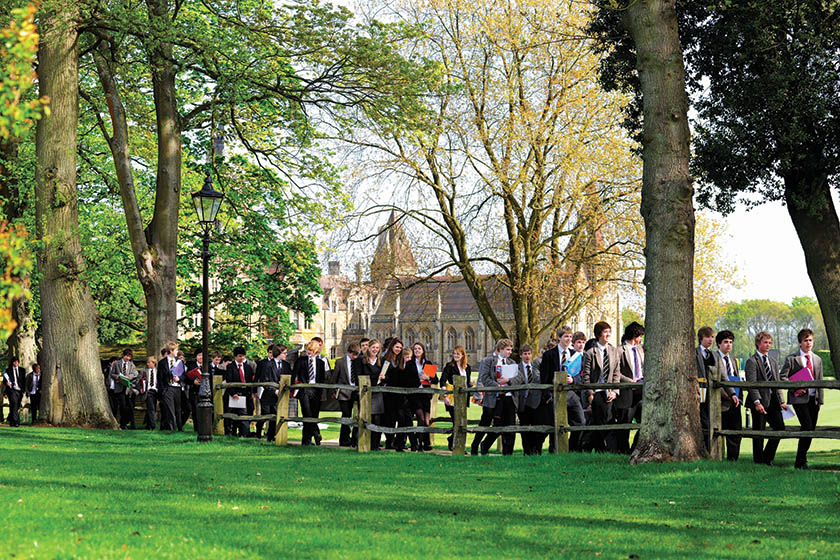A-Levels, IB and Pre-U Explained
By
7 years ago
Which is best in these testing times?

Is your Year 11 student deciding which course of study to follow at sixth-form? Take them through the basics..
Senior school examinations have gone through turbulent times recently. Changes to A-levels have been underway since last September with the eradication of modules, the phasing out of AS-levels and a significant reduction of coursework.
While A-levels are the common choice for most sixth-formers, many are shunning the qualification for alternatives like the IB and Pre-U. Here are the main differences between the sixth-form options…
A-levels

• Two-year course.
• Exams at the end of each year. Under the new system being introduced, all A-level exams will take place at the end of Year 13, with no marks from AS-levels (if you take these) contributing to the overall final grade.
• Three subjects usually taken, sometimes up to five.
• Composed of two units – AS and A2. AS can be studied as a separate qualification in its own right.
• Resits: restrictions and time limits but retakes are possible for individual units within a subject.
• Extended Project: equivalent to half an A-level, offering the opportunity to develop as an independent learner, find an academic passion and manage time efficiently.
• A-levels can be taken alongside Pre-Us.
• Recognised by all universities. Grades translate into UCAS points: A* is worth 140, an A is worth 120 etc. Universities usually make offers based on points, e.g. 300 points including an A in the course subject.
How are they graded?
Six passing grades, from A* to E. The first A* grade at A-level was awarded in 2010 to recognise the top eight per cent of all grades.
IB

• Two-year course.
• Assessment by exit exams and some coursework.
• Retakes possible but not common.
• Ethos: a broad, well-rounded education.
• Six subjects are taken: English (in the UK), a foreign language, a humanity, maths, science, an arts subject or elective which can be a second language, humanity or science.
• Plus the ‘core’, 150 hrs of creativity, action and service to develop appreciation of the arts, sports and helping the local community.
• Includes a critical thinking course and an extended 4,000-word essay on a chosen topic.
• Recognised by almost all universities. Universities make offers based on a specific subject score or all-round score. UCAS points for the IB are calculated by adding together the points for each of its separate parts.
How are they graded?
IB subjects are scored on points, with seven being the highest.
Pre-U

• Two-year course.
• Exam assessments at the end of the two years.
• Ethos: to study complex subjects at depth.
• Full diploma includes a minimum of three principal subjects although more can be taken and there is no restriction on choice of subjects.
• Can be taken alongside A-levels.
• Resits only available one year later when all exam papers for the whole subject are retaken.
• Global Perspectives and Research course must be taken to gain full Pre-U diploma.
• An Independent Research Report is also part of the full diploma, which is a report on a chosen topic to show independent learning skills.
• Recognised by over 145 UK universities and a growing number of international universities. Grades translate into UCAS points, e.g. D3 is worth 130 UCAS points.
How are they graded?
Nine passing grades, with D1 being the highest and P3 the lowest. D1 is one grade higher than A* at A-level.



